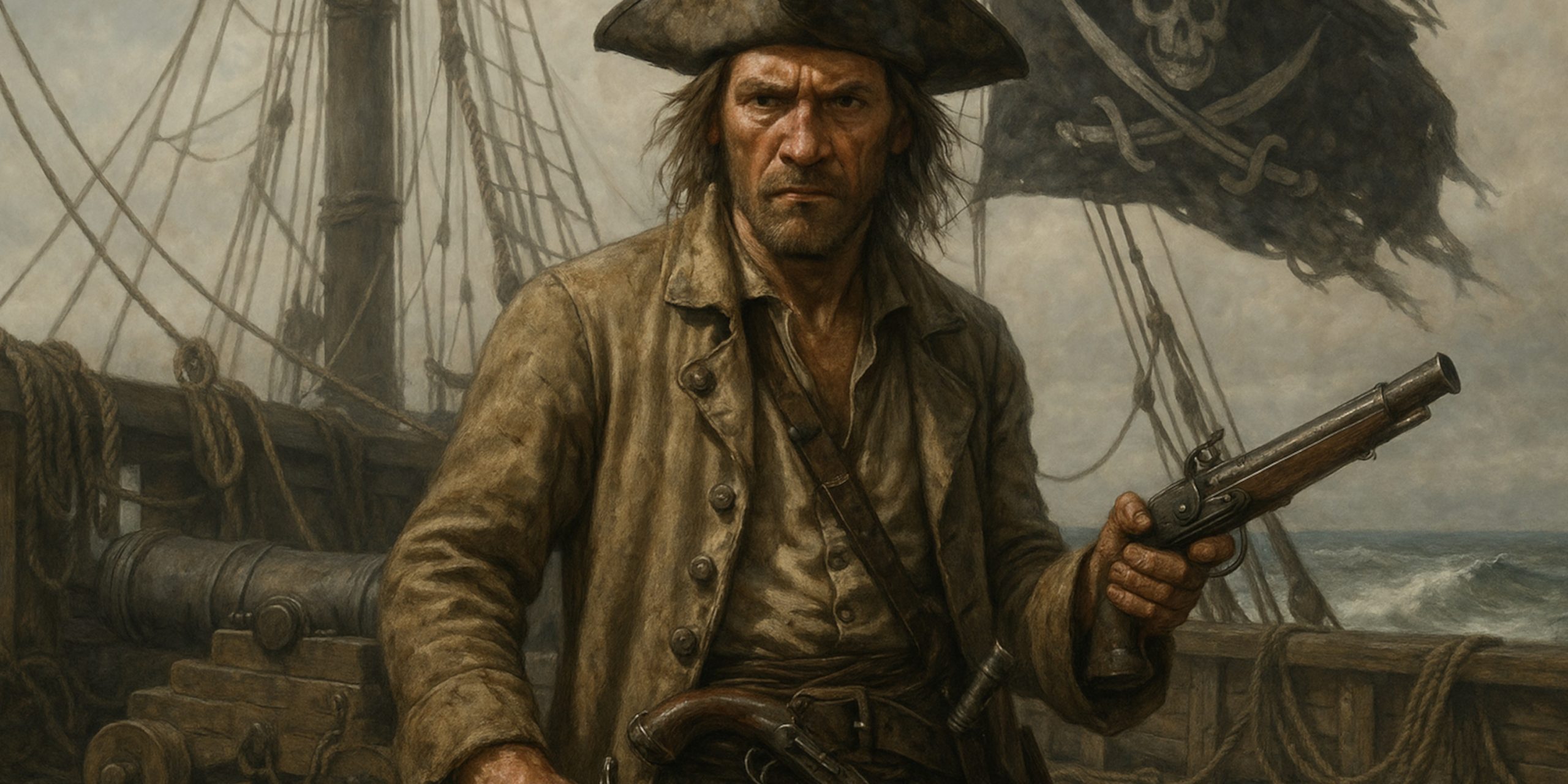
Edward Low, also known as Ned Low, was one of the most notoriously violent pirates of the early 18th century. His name became synonymous with cruelty during the Golden Age of Piracy. Active for only a few short years, Low left behind a trail of mutilated captives and burned ships, earning a reputation even his peers found excessive. His story, pieced together from colonial records, witness accounts and maritime reports, offers a chilling look into piracy at its bloodiest.
Early Life and Turn to Piracy
Edward Low was born around 1690 in Westminster, London. His background was steeped in poverty, and by most accounts, he grew up illiterate and quick-tempered. As a teenager, he moved to Boston and worked as a rigger and petty thief. The loss of his wife around 1719 seems to have marked a turning point in his life. Soon after, he left his job and joined a sloop headed to the Bay of Honduras.
There, while working among logwood cutters, Low staged a mutiny and took command of the vessel. This marked the beginning of his piratical career, which rapidly spiralled into brutality.
Ships and Naval Career
Low’s first ship as captain was the Rebecca, a small sloop he seized in the Bay of Honduras. From there, he captured more vessels and slowly expanded his fleet. His most infamous ship was the Fancy, a well-armed brigantine captured off the American coast.
Notable ships used by Edward Low:
| Ship Name | Type | Armament | Notes |
|---|---|---|---|
| Rebecca | Sloop | Light cannon | First command after mutiny |
| Fancy | Brigantine | Up to 20 guns | Flagship during peak operations |
| Ranger | Sloop | Unknown | Used during joint cruise with Charles Harris |
Low often operated with other pirates, notably Charles Harris and Francis Spriggs. His fleet sometimes included three or four ships at once, allowing him to block small ports and overwhelm merchant convoys.
Weapons and Combat Methods
Low’s crews were typically armed with flintlock pistols, cutlasses, boarding axes, and grenadoes. His approach to combat was swift and uncompromising. He preferred intimidation over drawn-out battles, relying on displays of savagery to discourage resistance.
Common weapons used by Low and his crew:
- Cutlasses and sabres for close combat
- Boarding pistols and muskets
- Grenadoes for ship-to-ship assaults
- Torture tools, including branding irons and knives, used on prisoners
Contemporary reports noted his excessive cruelty. According to a 1723 Boston report:
“Low would cut off lips and ears, forcing men to eat them… he delighted in cruelty for its own sake.”
Battles, Raids and Campaigns
Between 1721 and 1724, Low’s activity spanned from the West Indies to the American eastern seaboard and even the Azores. He targeted merchant ships and small coastal settlements, avoiding major naval engagements.
Key encounters:
- Newfoundland, 1722: Low’s fleet captured over a dozen vessels near the Grand Banks. Survivors told of extreme mistreatment.
- Sargasso Sea, 1723: In a brief engagement with a British man-of-war, Low’s fleet evaded capture but suffered damage.
- Azores, 1723–1724: His final campaign, raiding Portuguese shipping and coastal towns, ended in internal rebellion.
Low’s reign was less about strategic warfare and more about instilling fear. He rarely faced full naval battles but was a constant threat to unarmed or lightly-defended shipping routes.
Treasure and Bounty
Despite his notoriety, Low never amassed the kind of fortune that legends attribute to men like Blackbeard or Bartholomew Roberts. Much of what he plundered was in the form of cargo, supplies, or modest sums of coin.
Estimates place his largest single haul at no more than £15,000, and many of his raids yielded provisions rather than gold or jewels. He often burned ships after looting them, making it clear that terror was part of his method.
A 1723 proclamation by the British Admiralty placed a bounty of £100 on Low’s head. In the same year, colonial governors in Boston and New York began posting rewards for information leading to his capture or death.
Fate and Disappearance
Unlike many of his contemporaries, Edward Low’s end is murky. After falling out with his crew during the Azores campaign, Low reportedly murdered Charles Harris and separated from the fleet. By mid-1724, he had vanished from British records.
There are several theories:
- One report claims he was set adrift by his mutinous crew and died at sea.
- A Portuguese naval record suggests he was captured and hanged in 1724, though this is unconfirmed.
- Others argue he retired quietly under a false identity, though no credible evidence supports this.
No body, grave, or confirmed relic of Low has ever been found.
Legacy and Reputation
Edward Low’s legacy lies not in wealth or cunning but in the sheer violence of his conduct. He was widely condemned even by fellow pirates. Captain Charles Johnson, writing in 1724, described him as “a man of savage nature, void of mercy or reason.”
His infamy spread through broadsheets and court testimony. Low’s name became shorthand for gratuitous violence at sea, and his story was often used as propaganda to justify naval crackdowns on piracy.
Unlike romanticised pirates, Low was not seen as a rebellious rogue but as a monstrous figure in a chaotic era.
The Seven Swords Takeaway
Edward Low’s story is one of rage, violence and notoriety. He never built a pirate empire or struck alliances of influence, but his cruelty made him one of the most feared names in early 18th-century piracy. His short career, littered with mutilations and ship burnings, left a darker shadow than most. Whether he died alone or was executed abroad remains unknown. What endures is the fear he left behind, and the records of those who crossed his path and barely lived to speak of it.
Watch the documentary:



